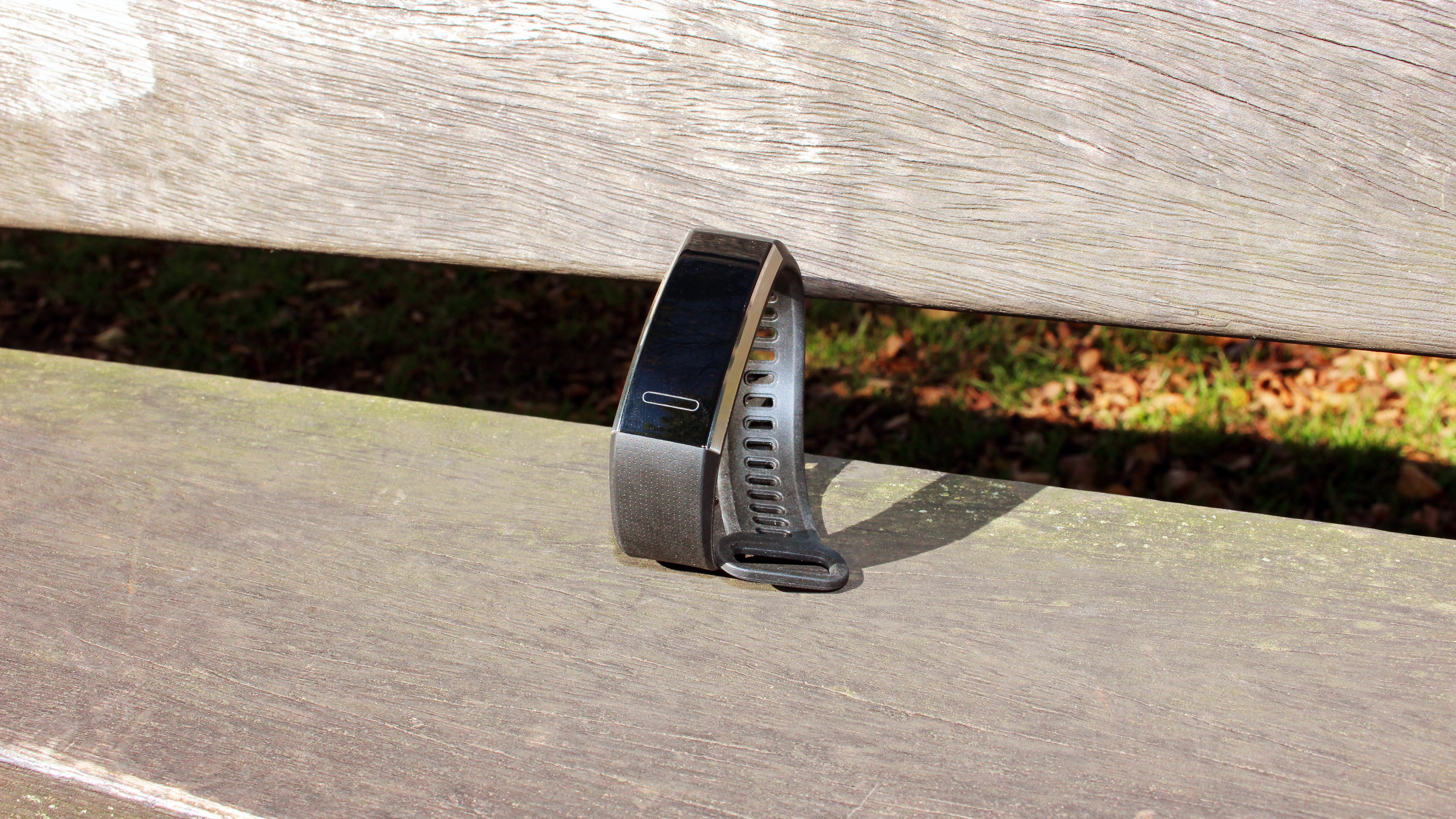Why you can trust TechRadar
Specs, performance and fitness
The Band 2 Pro’s menu interfaces are swift in their response which is great on a device of this price. Like the Huawei Fit, the simple operating system lends well to reliability.
The menu is smooth in its transitions, and the animations for the different modes (run, swim, bike) are fluid and pleasing.
The touch commands are very reliable, and the Band 2 Pro responds quickly. The gestural controls are a little less dependable, and sometimes it will inaccurately read a movement as a command, meaning you have to scroll through the entire menu to get back to the screen you wanted, which is a little frustrating.
The Huawei Band Pro 2 feels really durable, which - in addition to being totally waterproof - will help it resist the rigors of casual and hardcore use.

The waterproofing is a useful addition, as it means that you can track your swimming, and also stops you stressing about it getting wet if it rains on a run, or if you want to jump straight into the shower after a workout.
For an entry level device (which this is), you’ll be wanting an accurate step-count, and the Huawei Band 2 Pro’s pedometer is excellent. We regularly checked its accuracy and found that it only added between one and five steps in every hundred.
As is fairly ubiquitous with fitness trackers, there is a goal of 10,000 steps set as a basic goal for movement during the day, with a firework animation and vibration to congratulate you once you hit your goal.
It would be nice to see the ability to change the step goal within the Huawei Health app, but it’s 10,000 or nothing, and if we know anything it’s that ‘one size fits all’ very rarely works with fitness.
Unfortunately, that’s not where the app’s shortcomings end, it’s nice to look at, and well laid out, but when compared to the Google Fit app or Fitbit app, it looks underdone, and the interface is clunky.

When you tap into your heart rate or sleep monitoring, rather than go to the day you've clicked on, the app always opens the day you are currently on, meaning if you want to look at a day from the start of the week at the weekend, it’ll take many clicks before you get to the information you want.
Speaking of sleep tracking, the Band 2 Pro features TruSleep, which claims to be able to accurately track your sleep throughout the night, giving you a chart when you wake in the morning showing time spent in light sleep, deep sleep, and any wakeful moments during the night.
It’s obviously pretty difficult to ascertain the accuracy of these readings, but it was definitely easier to wake up on the days when it said we were in a light sleep zone when our alarm went off.
Where the Band 2 Pro really comes into its own is GPS tracking. For a device in the price bracket of the Band 2 Pro, we weren’t expecting a great deal from its GPS capabilities but we were pleasantly surprised.
The first time we tried to use the feature it took about five minutes to find GPS signal which worried us, but every time after it was swift to connect and very accurate.
If you go out for a run with your phone in your pocket it will automatically use your phone to boost its GPS signal, but even without a phone the readings are accurate, meaning if you’re training for a long run where distance and pace are important, the Band 2 Pro is a great value training accessory.
As we mentioned, the metrics aren’t the best on the Band 2 Pro. The heart rate measurements were always always off by at least 25 beats per minute (bpm). The worst we experienced was during the cool down period of a particularly intensive workout it read at 83 when our actual heart rate was 143.

Good heart rate monitoring requires correct fit and placement, which the Huawei Band 2 Pro helpfully guides you through, although even with correct placement and tight fit, the monitoring still remained inaccurate.
There are two different modes for heart rate monitoring, one that checks only when asked to, and one that is constantly monitoring. The above example was from the former mode, and we found that switching to constant monitoring greatly improved the accuracy.
It still wasn’t brilliant, as you can see from the charts below. It registered us as working in an anaerobic energy system for 15 minutes, which is physically impossible, but at least it was aware of the differences in energy expenditure, meaning if you do an interval training or Fartlek training session, it will be able to show the differences in effort.

The VO2 max reading is also not perfect, but was able to detect that our fitnessx was higher than average. We tested its accuracy by performing a Cooper run test (an industry standard for measuring VO2 max) and found that our true reading was 50, with the Band 2 Pro giving us a highest reading of 46.
The thing is, we would have been astonished if a product in the Band 2’s price bracket was able to get totally accurate readings. If you want accuracy, you’re going to want to get one of the much more pricey fitness trackers like the Garmin Forerunner 935 or the impressive Suunto Spartan Wrist Trainer HR.
The Huawei Band 2 Pro is more of an entry level device for if you’re wanting to take a step into the world of fitness analytics but aren’t yet willing to spend a lot, and it serves that function very well.
Compatibility
The Huawei Band 2 Pro is compatible with both Android and iOS devices as long as you’re running Android 4.4, iOS 8 or more recent.
On top of sending your fitness information to your phone, the Band 2 Pro can also receive certain information too, meaning that you get call and message notifications, and can even preview the first couple lines of text from your message.
This isn’t a fully fleshed out feature like you’d find on a true smartwatch like the Apple Watch, but it is a nice touch, easily allowing you to monitor your notifications without having to take your phone out of your pocket, which also stops you becoming that person at the gym.
Battery life
Something that we were a bit concerned about when we first saw the Huawei Band 2 Pro was the battery life.
With built-in GPS and a heart rate monitor built into its tiny chassis, we thought that there would only be so long that its small battery could handle both, or either one for that matter.

The 100mAh battery charges in about an hour and a half using the dock and USB cable, and can last up to 21 days of normal use. Normal use means that heart rate monitoring is turned off and you don’t use GPS. Turning both on, you’ll get about four hours out of the Band 2 Pro.
Having actually worn Huawei’s offering for over a week, we were very impressed with the battery life. For the first day and a half we left it in ‘normal mode’ and in keeping with its claim, it was still on 100% battery.
Once we started testing it more rigorously, the battery did start dropping a little faster, but at the end of a week of fairly intensive use, it was still at an impressive 30% battery.
Make no mistake, there are devices out there with better battery life, but for its size, it’s seriously impressive.
Current page: Performance, fitness and battery
Prev Page Introduction, price and design Next Page Verdict and competitionAndrew London is a writer at Velocity Partners. Prior to Velocity Partners, he was a staff writer at Future plc.

